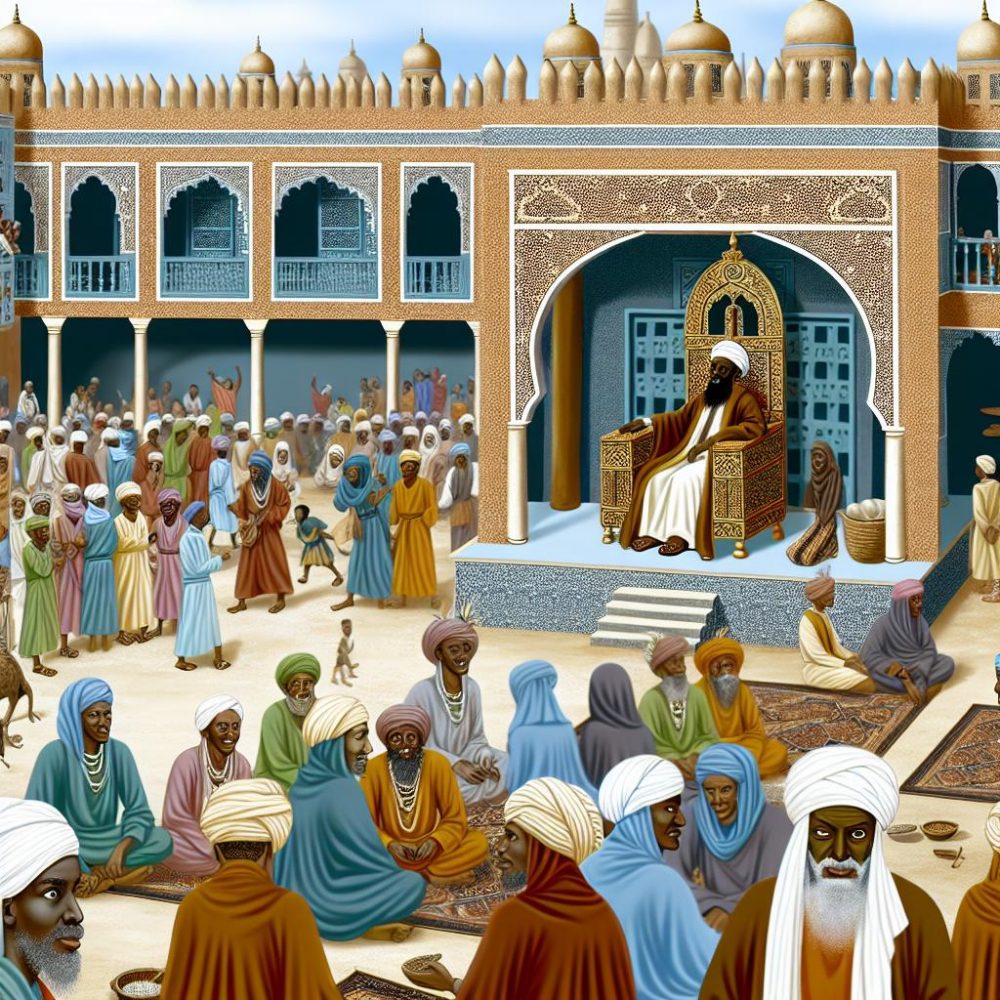
Introduction to Ancient Somali Sultanates
The ancient Somali sultanates hold a unique place in the history of the Horn of Africa. These historical polities, often overlooked in mainstream narratives, were instrumental in shaping the political, cultural, and economic landscape of the region. The societies within these ancient sultanates exhibited remarkable advancements in governance, trade, and cultural exchange, forming the backbone of what would become modern-day Somalia and parts of Ethiopia. This article delves into the influential sultanates that were pivotal in Somali history, exploring their origins, achievements, and enduring impacts.
The Sultanate of Ifat
The Sultanate of Ifat emerged in the late medieval period, carving out a significant role for itself in what is now eastern Ethiopia and Somalia. Established as an Islamic kingdom, Ifat quickly became a flourishing hub of commerce and trade. Its strategic location granted it access to key trade routes connecting the African interior to the Arabian Peninsula and further afield. Cities such as Harar became prominent under Ifat’s rule, exemplifying the sultanate’s urban and economic prowess.
Ifat was not merely a commercial powerhouse; it also wielded considerable political influence. This sultanate was involved in regional politics, navigating a complex landscape of alliances and conflicts. Despite its eventual downfall at the hands of the powerful Ethiopian Empire, Ifat’s cultural and economic contributions endured. Its legacy persisted even after its political influence waned, setting the stage for subsequent sultanates in the region.
The Adal Sultanate
With the decline of Ifat, the Adal Sultanate rose to prominence in the 15th century. Centered in Zeila, Adal became a formidable force led by illustrious leaders. Among these, Ahmad ibn Ibrahim al-Ghazi stands out for his military prowess and strategic acumen. His campaigns against the Ethiopian Empire are well-documented, highlighting Adal’s sophisticated military organization. At its zenith, the sultanate’s army was one of the few in Africa to incorporate firearms, underscoring its military innovation.
The Interaction with Surrounding Regions
Adal’s interactions with neighboring regions extended beyond military confrontations. The sultanate was an active participant in vibrant trade networks, fostering cultural exchanges across the Arabian Peninsula and Africa. These interactions facilitated the flow of goods, ideas, and cultural practices, enriching Adal and its territories. Although Adal eventually succumbed in the 16th century, its contributions to the historical narrative of the Horn of Africa were substantial, leaving a legacy of rich cultural intersections and military innovations.
The Sultanate of Ajuran
The Ajuran Sultanate played a vital role in medieval to early modern Somalia, exerting control over vast swathes of the southern region. Notable for its centralized governance and efficient tax system, Ajuran was pivotal in the development of agricultural infrastructure. The sultanate’s advanced irrigation systems were a testament to this, supporting a robust agricultural economy that attracted traders from distant lands.
Ajuran’s influence extended to cultural and architectural domains. The sultanate was renowned for its architectural feats, as seen in the numerous fortresses and castles that dotted the landscape. These structures were defensive in nature but also highlighted Ajuran’s advanced understanding of civil engineering and design principles.
Architectural Contributions
The architectural legacy of Ajuran is indispensable when examining its historical contributions. Fortresses and castles built under Ajuran not only served as military strongholds but also stood as symbols of architectural ingenuity. These edifices remain a testament to the sultanate’s capacity to design and implement complex engineering projects, influencing subsequent architectural developments in the region.
The Geledi Sultanate
The Geledi Sultanate emerged in the 17th and 18th centuries, establishing its dominance in southern Somalia. A hub of commerce, the Geledi Sultanate actively participated in the region’s dynamic trade networks. Its capital, Afgooye, flourished under Geledi rule, benefiting from a sophisticated administration that regulated trade and fostered cultural exchanges.
Resistance and Independence
A defining feature of the Geledi Sultanate was its resistance to colonial encroachment towards the late 19th century. Through astute alliances and skilful diplomacy, Geledi leaders managed to retain a degree of autonomy even as colonial forces swept across Africa. This resistance highlights the sultanate’s strategic capabilities and its role in preserving regional identity and independence during a period of intense colonial expansion.
Conclusion
The ancient Somali sultanates offer a rich tapestry of history that continues to inform and influence the region. From the political and military innovations of Ifat and Adal to the architectural and agricultural advancements of Ajuran and Geledi, these sultanates laid the groundwork for Somalia’s historical and cultural identity. Their legacies are etched across the Horn of Africa, illustrating the complex and dynamic nature of historical developments in East Africa. As we further explore these sultanates, we gain valuable insights into the intricate web of social, economic, and political factors that have shaped the region, fostering a deeper understanding of its role in world history.